Views: 604
 A monument to dr. Jonas Basanavičius in Vilnius in front of the building of the Lithuanian National Philharmonic
A monument to dr. Jonas Basanavičius in Vilnius in front of the building of the Lithuanian National Philharmonic
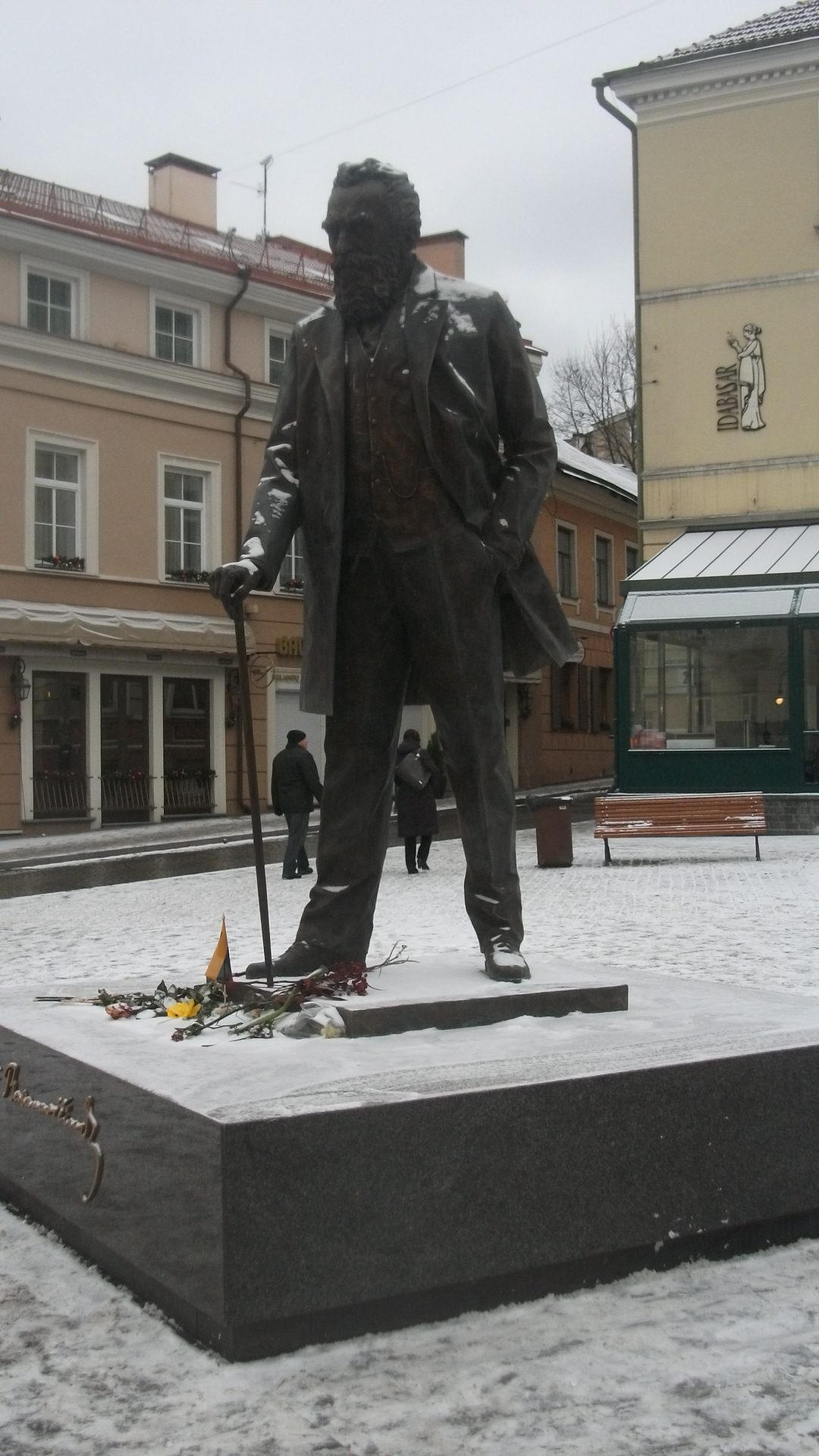 Dr. Jonas Basanavičius chaired the session of Lithuanian Council that adopted the Act of Independence of Lithuania on 1918-02-16. He was the first to sign the Act of the Proclamation of the Lithuanian Independence
Dr. Jonas Basanavičius chaired the session of Lithuanian Council that adopted the Act of Independence of Lithuania on 1918-02-16. He was the first to sign the Act of the Proclamation of the Lithuanian Independence
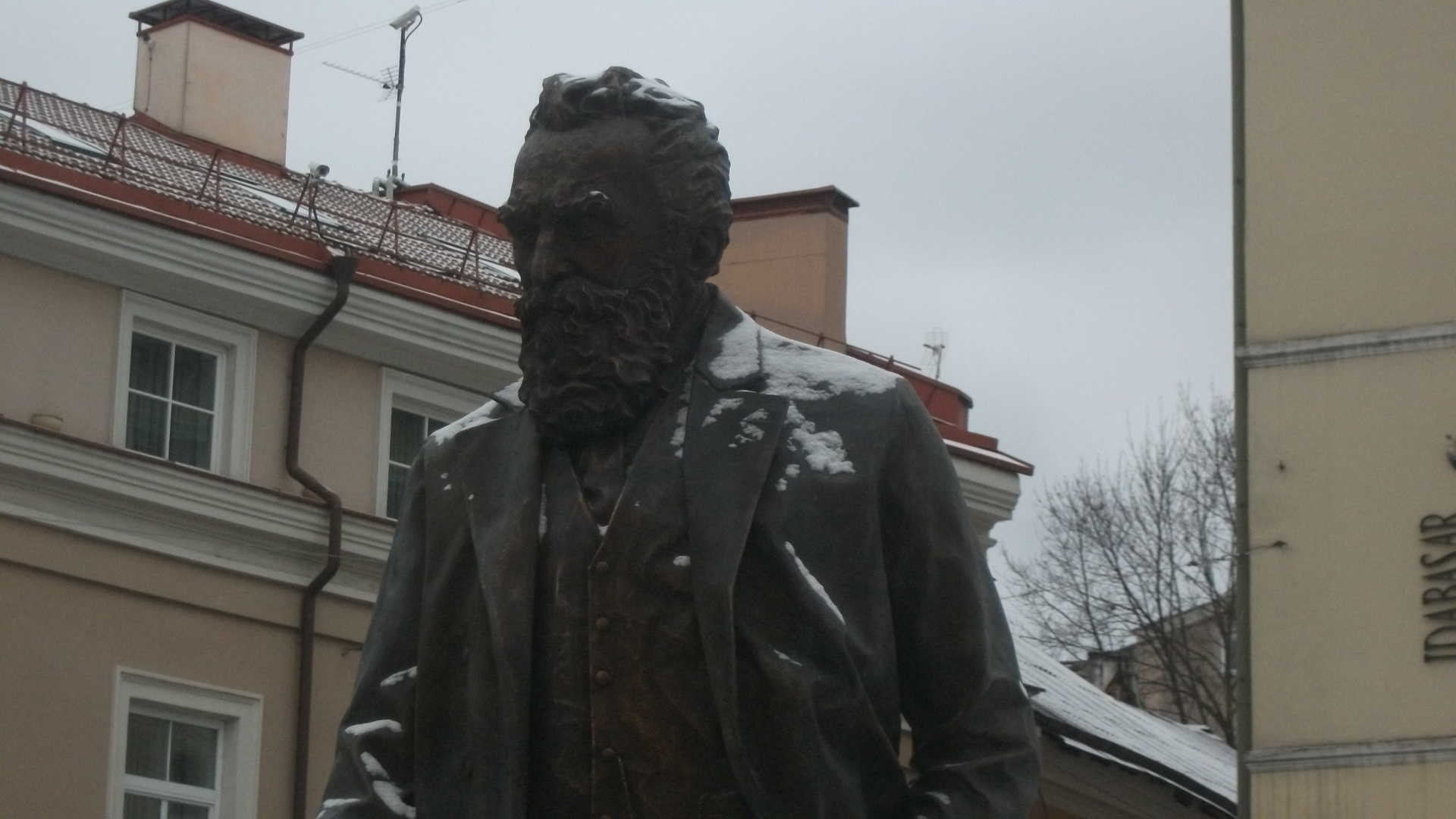 Balancing between Lithuanian and Polish interests, he refused to participate in the opening of the Polish Stefan Batory University (today Vilnius University)
Balancing between Lithuanian and Polish interests, he refused to participate in the opening of the Polish Stefan Batory University (today Vilnius University)
All photos are copyrighted by Vladislav B. Sotirovic
© Vladislav B. Sotirovic 2020
RELATED POSTS

One of the focal touristic attractions in the Žvėrynas district of Vilnius is the traditional type of the wooden houses coloured in different coloursŽvėrynas means "menagerie" or "beastland". In the 19th century a forest grew in this areaSince 1893, the process of urbanization of the district of Žvėrynas started with the building of wooden and brick villas and summerhouses. Today, this district of Vilnius is a prestigiuos residential part of the capitalAll photos are copyrighted by Vladislav B. Sotirovic© Vladislav B. Sotirovic 2020
Continue Reading
S. Skapo Street marks the northern limit (right) of the Vilnius University Old CampusA nice perspective view of de Reuss Palace seen from S. Skapo Street (west side) The Lopaciński or Sulistrowski estate in S. Skapo Street. The building got its Classical style according to Martin Knackfuss project. In 1930, the west wing was refurbished as the bishop's house. From 1940, the building housed a music schoolAll photos are copyrighted by Vladislav B. Sotirovic© Vladislav B. Sotirovic 2020
Continue Reading
Martynas Mažvydas National Library of Lithuania is a national cultural institution open to all users, active in the areas of dissemination of information, culture, science, and education, performing library activities and ensuring implementation of the national information policy falling within its competence The mission of the library is to be the Lithuanian space of knowledge-creating value for the public The vision of the library: to become an integral part of the state's information policy, culture, education, science, and economic progressAll photos are copyrighted by Vladislav B. Sotirovic© Vladislav B. Sotirovic 2019
Continue Reading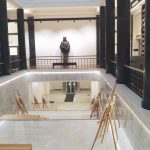
One of the meeting rooms in the library for public lectures, book presentations and discussionsOne of the exibition hallsOne of the Reading RoomsAll photos are copyrighted by Vladislav B. Sotirovic© Vladislav B. Sotirovic 2020
Continue Reading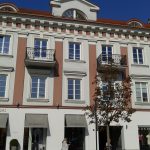
A plaque above the entrance to the courtyard of the house in which Mark Antokolski lived in the Old Town of VilniusThe inner courtyard of the house in which Mark Antokolski livedMark Antokolski returned to Vilnius every summer while studying at the Imperial Art Academy in St. Petersburg in the years 1862-1868All photos are copyrighted by Vladislav B. Sotirovic© Vladislav B. Sotirovic 2019
Continue Reading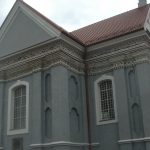
St. Lazarus' almshouse operated in this church, plague and famine victims were buried there. In 1715, the church and the monastery were given to the brethren of St. Rochus who tended to sick people, and in 1752 - to the sisters of MaryIn a cemetery at the church many outstanding people were buried, among others architect Laurynas Stuoka-Gucevičius. A memorial plaque to him is set up on the south façade of the church. However, later the cemetery was turned into a storage site of construction materialsThe church was severely damaged during a fire in 1794. The church was reconstructed and slightly transformed in 1801-1806. In 1864, the convent was closed down, and the buildings converted into a prisonAll photos are copyrighted by Vladislav B. Sotirovic© Vladislav B. Sotirovic 2020
Continue Reading
In the mid-19th century, Russian architect Nikolaj Chagin added a portal with statues of the Atlantes. In this palace Eustachy Tyszkiewicz held part of his archaeological collections that constituted the basis of the Museum of Antiquities (the first public museum in Vilnius) In 1863, it was a secret gattering place of the Lithuanian-Polish rebels against the Russian administration There is the Tyszkiewicz family coat of arms on the pediment - an aristocratic family who owned extensive estates in Lithuania. At the present time, the building is occupied by the Vilnius Gediminas Technical University (VGTU)All photos are copyrighted by Vladislav B. Sotirovic© Vladislav B. Sotirovic 2020
Continue Reading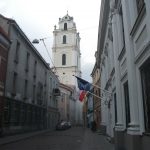
In this street, it was used to be a market place where it meets Pilies street. The first Town Hall is also believed to have stood on this spot Pharmacy house in St. John St. No. 5. Georg Schulz's pharmacy operated in this house since 1639. During the war in 1655, the house was burned down. In 1781, pharmacist Koszyk acquired the ruined building and reconstructed it The Pac estate. Since 1628, the building belonged to the Pac magnate family of the Grand Duchy of Lithuania. In 1783, the dilapidated building was bought, renovated and decorated by the Chancellor of the Grand Duchy of Lithuania - Alexander Michael Sapieha. Currently, the building belongs to the Polish Embassy All photos are copyrighted by Vladislav B. Sotirovic© Vladislav B. Sotirovic 2020
Continue Reading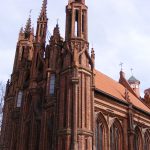
Church of St. Anne (left) and Bernardine Church (right). The church of St. Anne is a unique monument of red firebrick Gothic architecture in LithuaniaSt. Anne Church, designed in 1495-1500 by Benedikt Rejt, built up at the turn of the 15th century, and renovated in 1902-1909. 35 different kinds of brick were used help in creating the church. The façade was reinforced in 1960-1970St. Anne Church - a church which French Emperor Napoleon Bonaparte wanted to put on his palm and carry it over to Paris. The Church of St. Anne is symmetrical, marked by graceful, pointed forms that continue upwardAll photos are copyrighted by Vladislav B. Sotirovic© Vladislav B. Sotirovic 2018
Continue Reading
The Royal Palace at the foot of the Castle Hill was a residence of the Grand Duke of LithuaniaThe Lower Castle is related with the times of Sigismund the Old and Sigismund August, Qween Nona and Barbora Radvilaitė (16th century)In the 16th century the Royal Palace with its Inner Courtyard was an Italian-style palace with four wings and attics. The building around encircled the Inner Courtyard of 2,500 square metres and were connected to the eastern wall of the Cathedral Basilica by a roofed galleryAll photos are copyrighted by Vladislav B. Sotirovic© Vladislav B. Sotirovic 2018
Continue Reading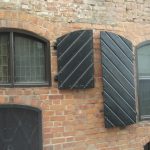
End of Stiklų St. on the intersection with Dominikonų St. and Šv. Ignoto St. in the Old Town in VilniusIn Stiklų St. No. 4 stands a typical building with a so-called Courtyard of the Printing House. Its history goes back to the 15th century. In the 16th century it held the Mamonichi printing house. A Gothic building in the courtyard with the exterior and fragments of the interior was reconstructed in 1974. In front of it a sculpture of "The Chronicler" is erected in 1973Wall (right) of the former Russian Orthodox church in Stiklų St. No. 17All photos are copyrighted by Vladislav B. Sotirovic© Vladislav B. Sotirovic 2020
Continue Reading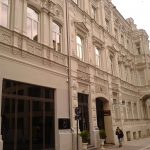
The building in Vilnius Street in Vilnius No. 25 in which Jonas Basanavičius died in hospital on February 16th, 1927. The day of his death coincided with the anniversary of the Independence Act in 1918A memorial plaque on the building informs that in this building in 1909 the Editorial Board of the oldest Lithuanian newspaper "Lithuanian News" started to work Another memorial plague on the building as this building housed a music school, where the famous violinist Jascha Heifetz studied in 1905-1909 All photos are copyrighted by Vladislav B. Sotirovic© Vladislav B. Sotirovic 2022
Continue Reading
Town Hall Square has been a market place since very early times, and it today dominated by the Town Hall which was formerly a court, with the basement being used as prison cellsThe Town Hall back-side. The present building was constructed between 1785 and 1799 by the Classical architect Lithuanian Laurynas Stuoka-Gucevičius The square in front of the Town Hall is the venue for an annual three-day crafts market on the weekend closest to March 4th, St. Casimir's DayAll photos are copyrighted by Vladislav B. Sotirovic© Vladislav B. Sotirovic 2020
Continue Reading
The Old Campus in the Old town - Rectorate building. On April 1st, 1579 the King of Poland and Grand Duke of Lithuania Stephen Bathory issues a royal charter recognizing the Jesuit College into a universityThe Old Campus in the Old town - Rector's Office and former Astronomical Observatory building (right) and the Central Library building (left) with the Central Library Courtyard in front of the buildingsThe History Facutly building (left) and the Central Library building (right) with the arched gates to Mikalojus Dukša Courtyard (left) and Mathias Casimir Sarbievius Courtyard (forward). The Old Campus of the university has 13 courtyardsAll photos are copyrighted by Vladislav B. Sotirovic© Vladislav B. Sotirovic 2018
Continue Reading
The Church of the Heart of Jesus is a significant monument of Baroque (finished in 1756). It is the only Roman Catholic church in Lithuania to be built along a Greek Orthodox cross designThe church has a large octagonal cupola (dome) and a very reach the elegant exterior. The interior is no less magnificent, although it was severely damaged during the Soviet timeAfter 1945, a prison was established in the church and convent buildings. The church interior and the plan of the convent buildings were transformed. After 1990, the sacral buildings are returned to their former ownersAll photos are copyrighted by Vladislav B. Sotirovic© Vladislav B. Sotirovic 2020
Continue Reading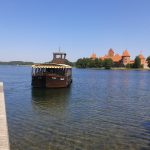
New Trakai is one of Lithuania's loveliest towns. It stretches out along a narrow peninsula between lakes, and it is a frequent destination for Vilnius residents, and visitors from abroad The largest lakes, such as Galvė, Skaistis, Bernardinai, and Totoriškės are connected together. Lake salmon breed in Lake AkmenaThe Trakai Historical National Park was included in the preliminary UNESCO World Heritage List in 2003. Trakai was Lithuania's second capital in Middle Ages. Its time of glory began under Grand Duke Vytautas the Great, who strengthened the Peninsula Castle, and built the most famous monument of Lithuania's ancient history - the Island CastleAll photos are copyrighted by Vladislav B. Sotirovic© Vladislav B. Sotirovic 2019
Continue Reading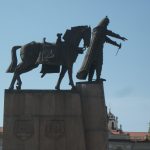
Grand Duke Gediminas is considered as the founder of the city of Vilnius. The monument is located in front of the Royal Palace and Cathedral Basilica in the very downtown of VilniusGediminas was a diplomatic politician, creating ties with the Roman Pope and other European rulers. He created favourable conditions for merchants and guildsmen to come to the city. Gediminas was a Grand Duke of the Grand Duchy of Lithuania from 1316 to 1341During the time of Gediminas, people of different ethnicities and confessions began to live in Vilnius. He is the founder of the Gediminian-Jagelonian ruling dynasty of Lithuania and later of Poland as well (till 1572)All photos are copyrighted by Vladislav B. Sotirovic© Vladislav B. Sotirovic 2018
Continue Reading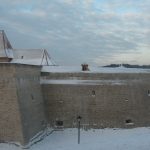
The Bastion is comprised of a tower, cannon room and 48 m. the long corridor connecting it with the towerThe walls and moats of the Bastion were excavated in 1965-1970, and the canon room was renovated in 1985-1986 The entire Bastion is converted into a museum, and since 1987 it houses an exhibition of defensive fortifications and weaponryAll photos are copyrighted by Vladislav B. Sotirovic© Vladislav B. Sotirovic 2019
Continue Reading
The organ, made by famous German master Adam G. Casparini in 1776, is one of the most valuable cultural monuments of Lithuania. The organ itself is the only surviving original 18th-century instrument in LithuaniaThe church has many Baroque frescoes. In the cupola, there is a multi-figural composition "Apotheosis of the Holy Spirit" (neo-Baroque, 19th century)The altars and the pulpit are lavishly decorated with round and relief sculptures and ornamentation All photos are copyrighted by Vladislav B. Sotirovic© Vladislav B. Sotirovic 2018
Continue Reading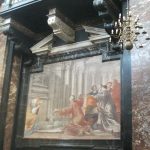
The silver cofin of St. Casimir is under a plaster canopy accompanied by relics. Under the cofin is a miraculous painting in a silver frame, with a silver statue with the saint's attributes placed on the cofin. The relief features a very rare depiction of a smiling Blessed Virgin Mary with Baby JesusIn the chapel there are eight silver-plated wooden Baroque statues of the Kings and Grand Dukes of Poland and Lithuania from the Gediminid and Jagiellon dynasties from the 17th centuryThree-Handed Image of St. Casimir c. 1520. This painting is considered to be miraculous. In 1743 the painting was put into a silver, gold-plated framing. St. Casimir is holding lilies and a rosary, which are his symbolsAll photos are copyrighted by Vladislav B. Sotirovic© Vladislav B. Sotirovic 2020
Continue ReadingTraditional Wooden Houses in Žvėrynas
S. Skapo Street
National Martynas Mažvydas Library
Martynas Mažvydas National Library of Lithuania (Inside)
Mark Antokolski House in Vilnius
Church of St. Stephen
Tyszkiewicz Estate in Trakų St. 1 in Vilnius
St. John Steet in Vilnius
Church of St. Anne
Royal Palace – Inner Courtyard
Stiklų St. in the Old Town in Vilnius
The Building in Vilnius Street No. 25
Around Town Hall Square in Vilnius
Vilnius University Est. 1579
Church of the Heart of Jesus and the Convent of the Visitationists in Vilnius
Lakes of Trakai
Monument to Lithuanian Grand Duke Gediminas
The Bastion of the Vilnius Defensive Wall (I)
Dominican Church of the Holy Spirit (Interior)
Chapel of St. Casimir (interior)



